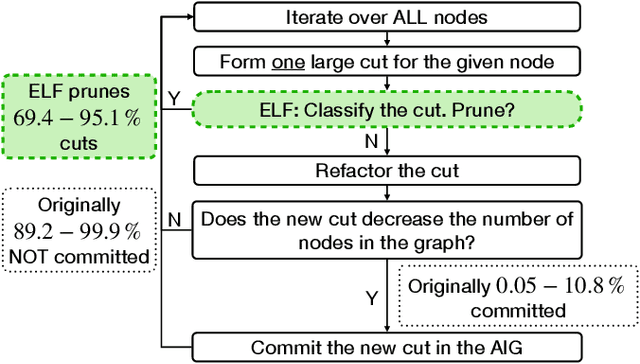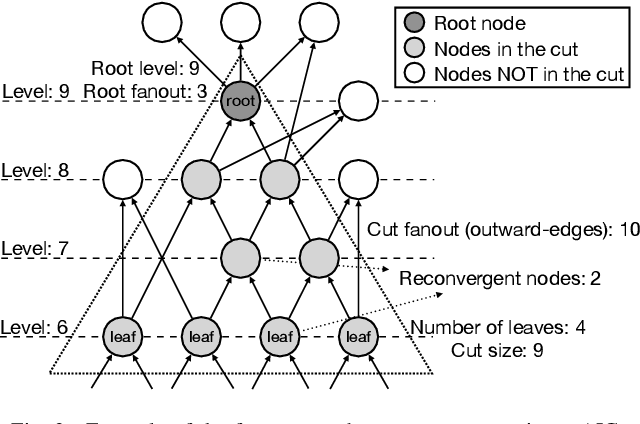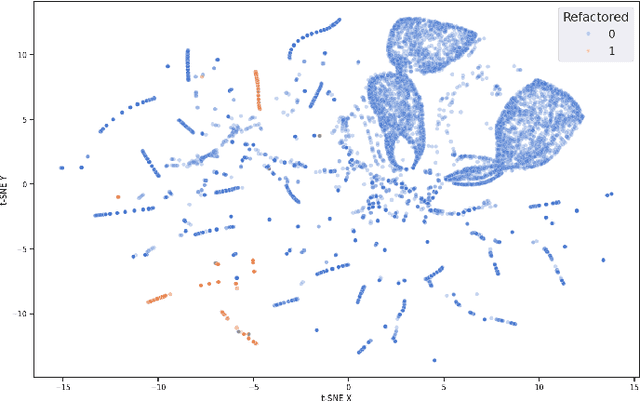Xing Li
Towards Efficient Agents: A Co-Design of Inference Architecture and System
Dec 20, 2025Abstract:The rapid development of large language model (LLM)-based agents has unlocked new possibilities for autonomous multi-turn reasoning and tool-augmented decision-making. However, their real-world deployment is hindered by severe inefficiencies that arise not from isolated model inference, but from the systemic latency accumulated across reasoning loops, context growth, and heterogeneous tool interactions. This paper presents AgentInfer, a unified framework for end-to-end agent acceleration that bridges inference optimization and architectural design. We decompose the problem into four synergistic components: AgentCollab, a hierarchical dual-model reasoning framework that balances large- and small-model usage through dynamic role assignment; AgentSched, a cache-aware hybrid scheduler that minimizes latency under heterogeneous request patterns; AgentSAM, a suffix-automaton-based speculative decoding method that reuses multi-session semantic memory to achieve low-overhead inference acceleration; and AgentCompress, a semantic compression mechanism that asynchronously distills and reorganizes agent memory without disrupting ongoing reasoning. Together, these modules form a Self-Evolution Engine capable of sustaining efficiency and cognitive stability throughout long-horizon reasoning tasks. Experiments on the BrowseComp-zh and DeepDiver benchmarks demonstrate that through the synergistic collaboration of these methods, AgentInfer reduces ineffective token consumption by over 50%, achieving an overall 1.8-2.5 times speedup with preserved accuracy. These results underscore that optimizing for agentic task completion-rather than merely per-token throughput-is the key to building scalable, efficient, and self-improving intelligent systems.
ELF: Efficient Logic Synthesis by Pruning Redundancy in Refactoring
Aug 11, 2025



Abstract:In electronic design automation, logic optimization operators play a crucial role in minimizing the gate count of logic circuits. However, their computation demands are high. Operators such as refactor conventionally form iterative cuts for each node, striving for a more compact representation - a task which often fails 98% on average. Prior research has sought to mitigate computational cost through parallelization. In contrast, our approach leverages a classifier to prune unsuccessful cuts preemptively, thus eliminating unnecessary resynthesis operations. Experiments on the refactor operator using the EPFL benchmark suite and 10 large industrial designs demonstrate that this technique can speedup logic optimization by 3.9x on average compared with the state-of-the-art ABC implementation.
Towards Prospective Medical Image Reconstruction via Knowledge-Informed Dynamic Optimal Transport
May 23, 2025Abstract:Medical image reconstruction from measurement data is a vital but challenging inverse problem. Deep learning approaches have achieved promising results, but often requires paired measurement and high-quality images, which is typically simulated through a forward model, i.e., retrospective reconstruction. However, training on simulated pairs commonly leads to performance degradation on real prospective data due to the retrospective-to-prospective gap caused by incomplete imaging knowledge in simulation. To address this challenge, this paper introduces imaging Knowledge-Informed Dynamic Optimal Transport (KIDOT), a novel dynamic optimal transport framework with optimality in the sense of preserving consistency with imaging physics in transport, that conceptualizes reconstruction as finding a dynamic transport path. KIDOT learns from unpaired data by modeling reconstruction as a continuous evolution path from measurements to images, guided by an imaging knowledge-informed cost function and transport equation. This dynamic and knowledge-aware approach enhances robustness and better leverages unpaired data while respecting acquisition physics. Theoretically, we demonstrate that KIDOT naturally generalizes dynamic optimal transport, ensuring its mathematical rationale and solution existence. Extensive experiments on MRI and CT reconstruction demonstrate KIDOT's superior performance.
TrimR: Verifier-based Training-Free Thinking Compression for Efficient Test-Time Scaling
May 22, 2025



Abstract:Large Reasoning Models (LRMs) demonstrate exceptional capability in tackling complex mathematical, logical, and coding tasks by leveraging extended Chain-of-Thought (CoT) reasoning. Test-time scaling methods, such as prolonging CoT with explicit token-level exploration, can push LRMs' accuracy boundaries, but they incur significant decoding overhead. A key inefficiency source is LRMs often generate redundant thinking CoTs, which demonstrate clear structured overthinking and underthinking patterns. Inspired by human cognitive reasoning processes and numerical optimization theories, we propose TrimR, a verifier-based, training-free, efficient framework for dynamic CoT compression to trim reasoning and enhance test-time scaling, explicitly tailored for production-level deployment. Our method employs a lightweight, pretrained, instruction-tuned verifier to detect and truncate redundant intermediate thoughts of LRMs without any LRM or verifier fine-tuning. We present both the core algorithm and asynchronous online system engineered for high-throughput industrial applications. Empirical evaluations on Ascend NPUs and vLLM show that our framework delivers substantial gains in inference efficiency under large-batch workloads. In particular, on the four MATH500, AIME24, AIME25, and GPQA benchmarks, the reasoning runtime of Pangu-R-38B, QwQ-32B, and DeepSeek-R1-Distill-Qwen-32B is improved by up to 70% with negligible impact on accuracy.
Unlocking Efficient Long-to-Short LLM Reasoning with Model Merging
Mar 26, 2025



Abstract:The transition from System 1 to System 2 reasoning in large language models (LLMs) has marked significant advancements in handling complex tasks through deliberate, iterative thinking. However, this progress often comes at the cost of efficiency, as models tend to overthink, generating redundant reasoning steps without proportional improvements in output quality. Long-to-Short (L2S) reasoning has emerged as a promising solution to this challenge, aiming to balance reasoning depth with practical efficiency. While existing approaches, such as supervised fine-tuning (SFT), reinforcement learning (RL), and prompt engineering, have shown potential, they are either computationally expensive or unstable. Model merging, on the other hand, offers a cost-effective and robust alternative by integrating the quick-thinking capabilities of System 1 models with the methodical reasoning of System 2 models. In this work, we present a comprehensive empirical study on model merging for L2S reasoning, exploring diverse methodologies, including task-vector-based, SVD-based, and activation-informed merging. Our experiments reveal that model merging can reduce average response length by up to 55% while preserving or even improving baseline performance. We also identify a strong correlation between model scale and merging efficacy with extensive evaluations on 1.5B/7B/14B/32B models. Furthermore, we investigate the merged model's ability to self-critique and self-correct, as well as its adaptive response length based on task complexity. Our findings highlight model merging as a highly efficient and effective paradigm for L2S reasoning, offering a practical solution to the overthinking problem while maintaining the robustness of System 2 reasoning. This work can be found on Github https://github.com/hahahawu/Long-to-Short-via-Model-Merging.
Pig behavior dataset and Spatial-temporal perception and enhancement networks based on the attention mechanism for pig behavior recognition
Mar 12, 2025Abstract:The recognition of pig behavior plays a crucial role in smart farming and welfare assurance for pigs. Currently, in the field of pig behavior recognition, the lack of publicly available behavioral datasets not only limits the development of innovative algorithms but also hampers model robustness and algorithm optimization.This paper proposes a dataset containing 13 pig behaviors that significantly impact welfare.Based on this dataset, this paper proposes a spatial-temporal perception and enhancement networks based on the attention mechanism to model the spatiotemporal features of pig behaviors and their associated interaction areas in video data. The network is composed of a spatiotemporal perception network and a spatiotemporal feature enhancement network. The spatiotemporal perception network is responsible for establishing connections between the pigs and the key regions of their behaviors in the video data. The spatiotemporal feature enhancement network further strengthens the important spatial features of individual pigs and captures the long-term dependencies of the spatiotemporal features of individual behaviors by remodeling these connections, thereby enhancing the model's perception of spatiotemporal changes in pig behaviors. Experimental results demonstrate that on the dataset established in this paper, our proposed model achieves a MAP score of 75.92%, which is an 8.17% improvement over the best-performing traditional model. This study not only improces the accuracy and generalizability of individual pig behavior recognition but also provides new technological tools for modern smart farming. The dataset and related code will be made publicly available alongside this paper.
A Helping (Human) Hand in Kinematic Structure Estimation
Mar 07, 2025Abstract:Visual uncertainties such as occlusions, lack of texture, and noise present significant challenges in obtaining accurate kinematic models for safe robotic manipulation. We introduce a probabilistic real-time approach that leverages the human hand as a prior to mitigate these uncertainties. By tracking the constrained motion of the human hand during manipulation and explicitly modeling uncertainties in visual observations, our method reliably estimates an object's kinematic model online. We validate our approach on a novel dataset featuring challenging objects that are occluded during manipulation and offer limited articulations for perception. The results demonstrate that by incorporating an appropriate prior and explicitly accounting for uncertainties, our method produces accurate estimates, outperforming two recent baselines by 195% and 140%, respectively. Furthermore, we demonstrate that our approach's estimates are precise enough to allow a robot to manipulate even small objects safely.
AttentionPredictor: Temporal Pattern Matters for Efficient LLM Inference
Feb 06, 2025



Abstract:With the development of large language models (LLMs), efficient inference through Key-Value (KV) cache compression has attracted considerable attention, especially for long-context generation. To compress the KV cache, recent methods identify critical KV tokens through heuristic ranking with attention scores. However, these methods often struggle to accurately determine critical tokens as they neglect the \textit{temporal patterns} in attention scores, resulting in a noticeable degradation in LLM performance. To address this challenge, we propose AttentionPredictor, which is the first learning-based critical token identification approach. Specifically, AttentionPredictor learns a lightweight convolution model to capture spatiotemporal patterns and predict the next-token attention score. An appealing feature of AttentionPredictor is that it accurately predicts the attention score while consuming negligible memory. Moreover, we propose a cross-token critical cache prefetching framework that hides the token estimation time overhead to accelerate the decoding stage. By retaining most of the attention information, AttentionPredictor achieves 16$\times$ KV cache compression with comparable LLM performance, significantly outperforming the state-of-the-art.
KVTuner: Sensitivity-Aware Layer-wise Mixed Precision KV Cache Quantization for Efficient and Nearly Lossless LLM Inference
Feb 06, 2025



Abstract:KV cache quantization can improve Large Language Models (LLMs) inference throughput and latency in long contexts and large batch-size scenarios while preserving LLMs effectiveness. However, current methods have three unsolved issues: overlooking layer-wise sensitivity to KV cache quantization, high overhead of online fine-grained decision-making, and low flexibility to different LLMs and constraints. Therefore, we thoroughly analyze the inherent correlation of layer-wise transformer attention patterns to KV cache quantization errors and study why key cache is more important than value cache for quantization error reduction. We further propose a simple yet effective framework KVTuner to adaptively search for the optimal hardware-friendly layer-wise KV quantization precision pairs for coarse-grained KV cache with multi-objective optimization and directly utilize the offline searched configurations during online inference. To reduce the computational cost of offline calibration, we utilize the intra-layer KV precision pair pruning and inter-layer clustering to reduce the search space. Experimental results show that we can achieve nearly lossless 3.25-bit mixed precision KV cache quantization for LLMs like Llama-3.1-8B-Instruct and 4.0-bit for sensitive models like Qwen2.5-7B-Instruct on mathematical reasoning tasks. The maximum inference throughput can be improved by 38.3% compared with KV8 quantization over various context lengths.
SeaDAG: Semi-autoregressive Diffusion for Conditional Directed Acyclic Graph Generation
Oct 21, 2024



Abstract:We introduce SeaDAG, a semi-autoregressive diffusion model for conditional generation of Directed Acyclic Graphs (DAGs). Considering their inherent layer-wise structure, we simulate layer-wise autoregressive generation by designing different denoising speed for different layers. Unlike conventional autoregressive generation that lacks a global graph structure view, our method maintains a complete graph structure at each diffusion step, enabling operations such as property control that require the full graph structure. Leveraging this capability, we evaluate the DAG properties during training by employing a graph property decoder. We explicitly train the model to learn graph conditioning with a condition loss, which enhances the diffusion model's capacity to generate graphs that are both realistic and aligned with specified properties. We evaluate our method on two representative conditional DAG generation tasks: (1) circuit generation from truth tables, where precise DAG structures are crucial for realizing circuit functionality, and (2) molecule generation based on quantum properties. Our approach demonstrates promising results, generating high-quality and realistic DAGs that closely align with given conditions.
 Add to Chrome
Add to Chrome Add to Firefox
Add to Firefox Add to Edge
Add to Edge